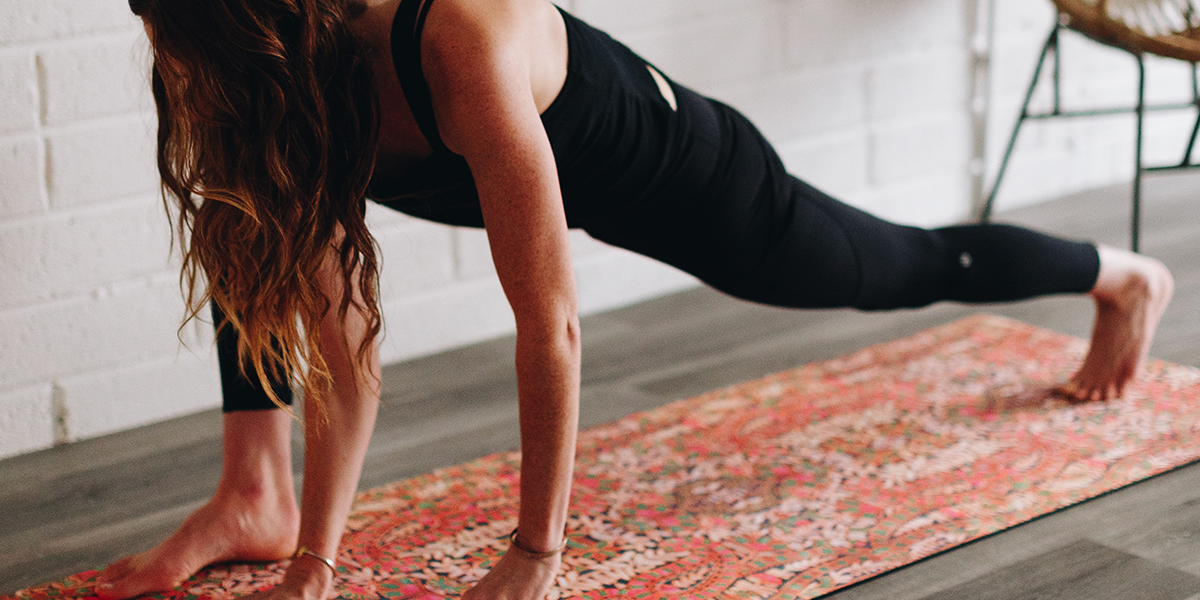One of my all-time favorite exercises is the lunge.
That might be why I like the DDP Yoga Supported Lunge Into Space Shuttle position in the DDPY Diamond Dozen so much.
The Benefits of Lunges
Much like the Push-up, the lunge features a whole host of benefits.
- Lunges strengthen, shape, and sculpt your lower body. “A research study by the American Council on Exercise found the forward lunge to be one of the most effective exercises for eliciting a high level of muscle activity in the gluteus maximus, gluteus medius and hamstrings—significantly more than other common lower-body exercises like the body-weight squat”
- Lunges work your core, too. Your core helps you maintain balance throughout the movements of the lunge.
- Lunges help make activities of daily living easier by increasing your balance, like walking or climbing stairs.
Add in any variation to the lunge, and it can be like you’re doing a brand-new exercise.
How To Do The DDP Yoga Supported Lunge
Step out into a lunge with, say, your left foot forward. Your left foot should be flat, and your knee should be directly over your ankle. There should be a 90-degree angle between the floor and your foot.
You should be up on the ball of your back foot so that your heel is off the ground.
Depending on how difficult this is for you, consider stepping your back foot in a little bit. Or, drop your back knee to the ground to take some of the pressure off your front leg. Regardless, maintain your front knee over your front ankle, or you risk losing some of the effectiveness of the lunge.
Get New Arrivals at YogaOutlet.com>>
Finally, DDP Yoga Lunges engage the upper body, as well. Push both of your hands into your forward thigh. Roll shoulder shoulders back. Your triceps should be engaged here.
This is Supported Lunge. Typically, at least in my class, I come into a lunge following Down Dog, or, if I’m feeling a little nicer, following Table.
Supported Lunge looks most closely like Crescent Lunge, except in DDP Yoga, the hands are pressing into the leg instead of reaching high.
How To Do Space Shuttle
Space Shuttle looks similar to High Lunge, but with a key difference.
Take a deep breath in Supported Lunge. Exhale and lower your chest down to your thigh (or as close as you can get).
From here, you have a few options. I’ll explain from easiest to most challenging.
First, you can simply keep your hands on your thigh. Don’t even move them from Supported Lunge. Make sure you’ve rolled your shoulders back.
Second, you can bring your arms back so that your biceps are touching your rib cage. Your hands are open, like you’re holding a ball behind your back or butt.
Finally, from that position, you can interlace your fingers to open your shoulders more.
Take a deep breath in and count back from 5, 4, 3, 2, 1.
Explode off that front leg and reach up to the sky in Touchdown. You get bonus points if you can keep that lunging foot on the ground while holding your opposite foot off the ground.
What Body Parts Are Working In Supported Lunge To Space Shuttle
You’re working your quadriceps, glutes, hamstrings, calves, toes, core, hip flexors, and your shoulders in these two positions. Who thought a lunge would have so many benefits?
Now It’s Your Turn
You can try DDPY a few ways with me. First, I teach group DDPY classes. I also am available for 1:1 or small group DDPY training.
Photo by Zen Bear Yoga on Unsplash
